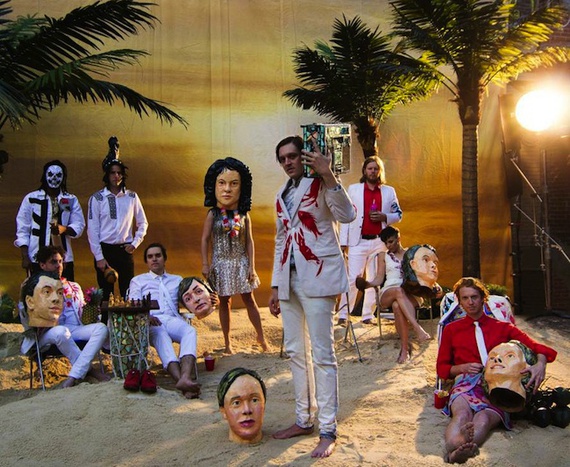Infiltrating the colonial city through the imaginaries of Metissage: Saint-Louis (Senegal), Saint-Pierre (Martinique) and Jeremie (Haiti)
University of Iowa
August 2015
281 pages
Avonelle Pauline Remy, Assistant Professor of French
Hope College, Holland, Michigan
A thesis submitted in partial fulfillment of the requirements for the Doctor of Philosophy degree in French and Francophone World Studies in the Graduate College of The University of Iowa
In this dissertation, I investigate the ways in which the phenomenon of racial and cultural hybridity inform and alter the social, political and cultural fabric of three creole cities of significant colonial influence, namely Saint-Louis of Senegal, Saint-Pierre of Martinique and Jérémie of Haiti during and after the colonial era. In particular, I examine the relevance of the French colonial city not only as a nexus of relational complexity but also as an ambiguous center of attraction and exclusion where multiple identities are created and recreated according to the agendas that influence these constructions. In order to articulate the main hypotheses of my thesis, I explore the key historical and social catalysts that have led to the emergence of Saint-Louis, Saint-Pierre and Jérémie as original creole cities.
Through the critical analyses of contemporary literatures from Senegal, Martinique and Haiti by Fanon, Sadji, Boilat, Mandeleau, Confiant, Chamoiseau, Salavina, Bonneville, Moreau de Saint-Méry, Desquiron, and Chauvet and films by Deslauriers and Palcy, I illustrate the dynamics of creolization within the context of the French colonial city. I argue that the city engenders new narratives and interpretations of métissage that scholars have often associated with the enclosed space of the plantation.
My dissertation intends to prove that the three French colonial cities of Saint-Louis, Saint-Pierre and Jérémie offer distinct interpretations and practices of processes of cultural and ethnic métissage. I propose that a correlation albeit a dialectical one, exists between the development of the French colonial city and the emergence of the mulattoes as a distinct class, conscious of its economic, sexual and political agency. I suggest that the French colonial city, represents both a starting point and a space of continuity that permits new forms of ethnic and cultural admixture. The articulation of such mixtures is made evident by the strategic positioning and creative agency of the mulatto class within the colonial city.
The phenomenon of métissage is certainly not a novel subject as evidenced by the plethora of theories and studies advanced by scholars and intellectuals. My research is thus part of an existing critical literary corpus in Postcolonial and Francophone Studies and is inscribed within the theoretical framework of Creolization. My research observes from a historical, comparative and literary perspective, metis presence and consciousness in three specific spaces where colonial authority has been imposed, challenged, resisted and even overpowered (in the case of Haiti). My study therefore analyses the creative agency articulated by the metis ethnoclass in the colonial city and counters the claim of a passive assimilated group.
As an in-between group, mulatto’s access to social, economic and political upward mobility are impeded by their ambiguous positioning within the larger community. Consequently, they resort to unconventional means that I refer to rather as creative ingeniousness in order to survive. Scholars usually focus on these “unconventional” practices as immoral rather than as strategies of self-reinvention and revalorization. As a result, representations of cultural and ethnic interconnections and hybridity are often projected in fragmentary ways. The figure of the metis women for example is overly represented in studies on métissage while metis men receive very little attention. My thesis thus intends to decenter narratives on métissage from the women and implicate equally the creative agency of metis males.
My thesis expands on the complexities that inform processes of métissage during pre-colonial Saint-Louis in the early seventeenth century, Saint-Pierre from the period 1870-1902 and Jérémie during the dictatorship of Francois Duvalier. It examines further the city as a space that engenders new narratives and interpretations of the processes of creolization. Processes of métissage or creolization have often been described as the results of violent encounters that were colonial and imperial. Moreover, these clashes were inscribed within the enclosed space of the plantation.
The city, representation of European pride and greed is an ambiguous space that attracts even as it excludes. Projected as an active commercial, economic and cultural hub, the city is soon engulfed by mass emigration. That site where the European image and culture is imposed, quickly evolves into a complex and chaotic web of human and material interaction giving rise to a complex creolized atmosphere. I propose that practices of métissage in the city are distinct from those generated in the belly of the slave ships, in the trading houses of Sub-Saharan Africa and on the sugar plantations of the French Antilles.
I conclude with a look at the present context of métissage, I rethink the significance of racial and cultural hybridity in relation to contemporary cultural and social theories such as creolization, creoleness, and transculturation in articulating, interpreting and decoding a world in constant transformation.
Read the entire dissertation here.




